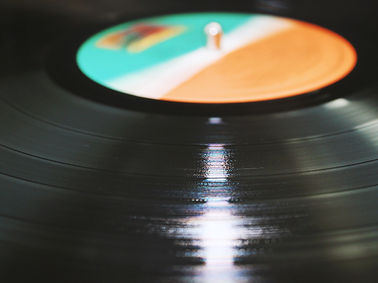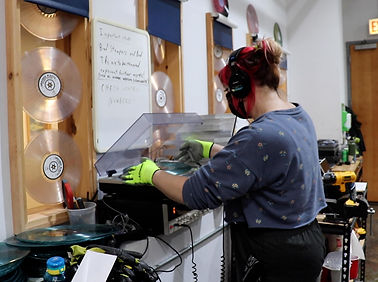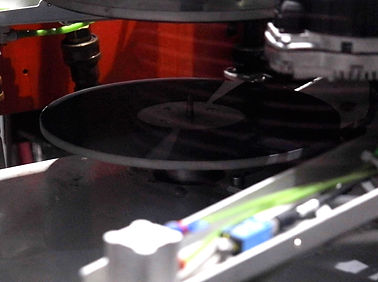

How Are Vinyl Records Made?
If you are eager to discover how vinyl records are made, you’ve come to the right place. This article will break down the record-making process from start to finish.

Step 1
Pre-Mastering
You need to have your music mastered. This ensures that the sound quality is maintained and making sure there are no distortion, skips, or errors on your record.
Step 2
Lacquer Cutting
The lacquer is cut using a lathe, cutting the music in real-time using a sapphire-tipped cutter. The music is recorded in real-time from start to finish; this creates one continuous groove in the lacquer.


Step 3
Creating a Stamper
The lacquer for Side A and Side B are sprayed with a solution of silver. After being coated with silver, they are submerged in a nickel bath with an electric current running through it. This electric current causes the Nickel in the solution to bond with the silver particles creating the negative mold used at the pressing plant.
Step 4
Test Record Quality Check & Approval
Once the stamper has been made, a pressing plant will make a batch of test records for the client to listen to approve. Once they are approved, the pressing plant can begin making the order.


Step 5
Load The PVC
There are three parts to the pressing machine. The pressing process begins with PVC (Polyvinyl Chloride), small plastic pellets that melt into the machine.
Step 6
The Extruder
The extruder is what melts the plastic (PVC). It comes out of a cord, creating a puck This is how a record begins. Once the puck is made, a suction cut will pick up an A label and a B label. All three will go into the press.


Step 7
The Press
A large skew comes down and holds them into place as the press engages; all of the PVC is pushed out with hot water pressure. The hot water is used to ensure that all molten plastic gets into every little groove of the record. Next, cold water is used to ensure the plastic won’t melt.
Step 8
The Trimmer
The trimmer trims off the excess of the record. It’s moved and then placed on the spindle.


Step 9
Cooling Records
A cooling plate is placed every five records sitting for 24 hours. Once cooled, they are moved into packaging.
Step 10
Quality Check & Packaging
They are inspected again for quality to ensure no records have any bumps or nicks. They are inserted by hand into paper sleeves for protection and then assembled into jackets, add inserts, download cards, posters, shrink-wrapped stickers, and boxed and shipped.

.png)
